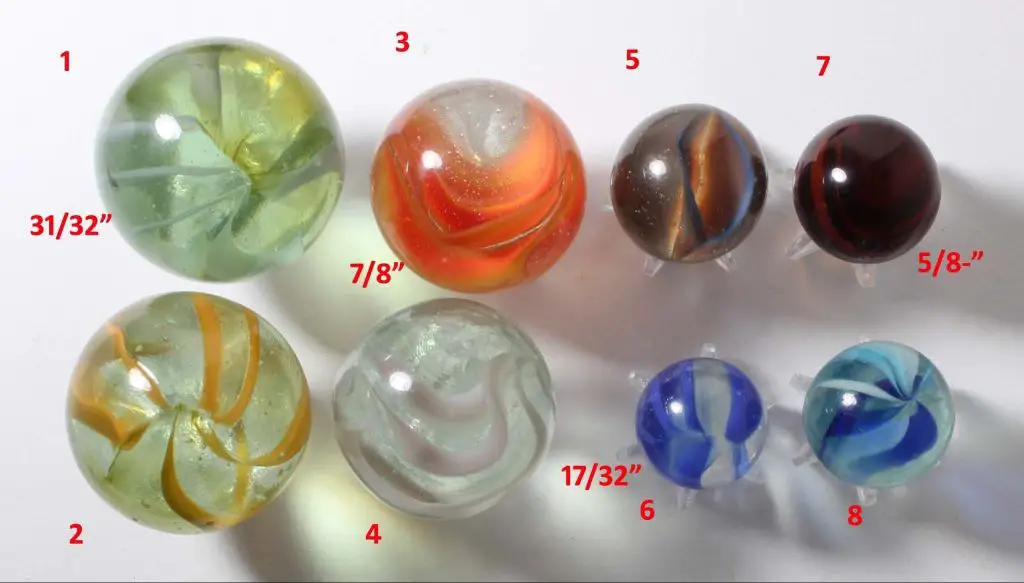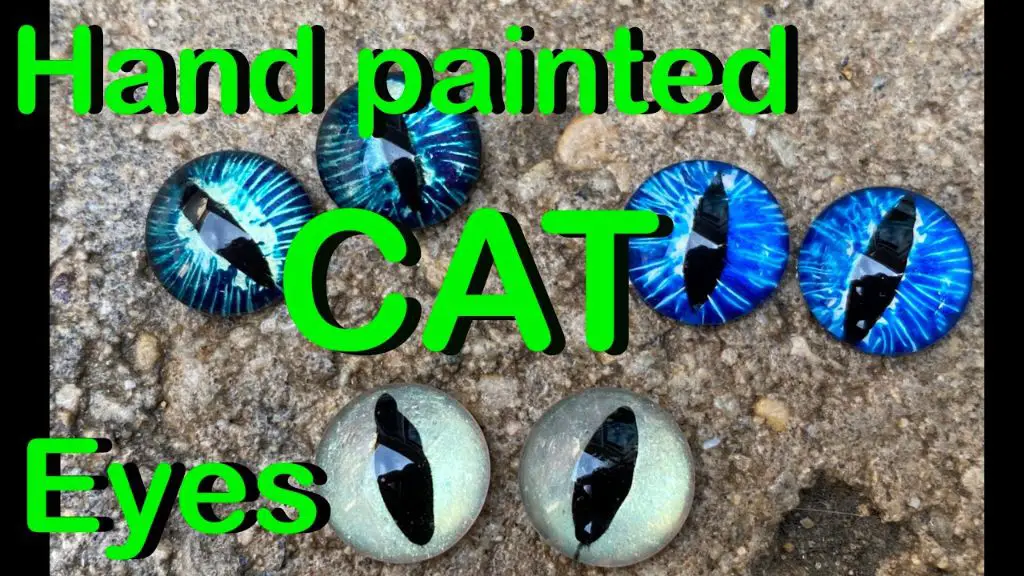Introduction to Cat Eye Marbles
Cat eye marbles are a type of handmade glass marble known for their distinctive elongated swirl pattern resembling a cat’s eye. They first emerged in Japan in the late 1940s and were exported to Canada and the United States, gaining immense popularity through the 1950s (Source). With their vibrant colors and hypnotic look, cat eye marbles evoke nostalgia for vintage toys and old-fashioned marble games.
The unique appearance of cat eye marbles comes from their multi-step manufacturing process. Skilled glass workers expertly manipulate molten glass to create the marbles’ signature cores, elegant swirl patterns, and translucent finish. While largely machine-made today, the highest quality cat eye marbles are still handcrafted by artisans. The complex production process results in no two marbles looking exactly alike.
This article will provide an in-depth look at how cat eye marbles are made, from melting the glass to packaging the finished product. It will highlight how modern technology combines with traditional glassworking techniques to produce these captivating collectibles.
Glass Ingredients
The glass used to make cat eye marbles is specifically formulated for the marbling process. According to How to Make Hand-Blown Glass Marbles, the glass contains compounds like silica, soda, and lime that allow it to melt at lower temperatures. This makes the glass easier to work with during the marble making process.
The clarity and color of the glass is also important. Clear glass allows the vibrant colors applied later in the process to shine through. Special compounds can also be added to tint the glass different colors, like cobalt for blue or chromium for green. According to How is a glass marble made so spherical?, these compounds help create the vibrant colors in cat eye marbles while maintaining the glass clarity needed for the skilled marbling process.
Melting the Glass

The process of making cat eye marbles begins with melting glass. While modern marble making uses specially formulated glass, originally any scrap glass could be used. The glass ingredients are measured out and then loaded into a crucible, which is typically made of ceramic or refractory materials that can withstand extremely high temperatures.
The crucible is then placed into a furnace and heated up from 1300-1400 degrees Fahrenheit. This causes the glass ingredients to melt into a molten liquid state. The precise temperature depends on the composition of the glass mixture. Higher lead content and soda glass melts at lower temperatures around 1300F, while borosilicate glass requires higher 1400F+ temperatures.
Getting the temperature right is crucial, as too cold and the glass won’t melt fully, while too hot can burn off ingredients or cause defects. The glass must become completely molten, with no remaining particles or chunks. Once in a fully liquid state, the glass is ready to be gathered out of the crucible and formed into marbles.
Forming the Core

The core of a cat eye marble is the most important part, as it forms the center around which the other layers of glass are added. There are several techniques used to create the centered glass core:
One method is to gather a ball of molten glass on the end of a punty rod and then attach 3-4 separate trails of glass called canes. The glass blower then heats and shapes the canes around the core to create a symmetrical pattern (Handmade Swirl Marbles with a Core).
Another technique is to cut sections of glass rod and fuse them together around a glass bubble. A paddle is then used to shape the fused rods into a rounded core (How Marbles are Made – ASM International).
Having a perfectly centered core is crucial in marble making. If the core is off-center, the marble will be unbalanced and wobble when rolled. A symmetrical, centered core allows the outer layers and patterns to be applied evenly.
Applying the Base Color
After the glass cores have been formed, the next step is to dip them into a vat of molten glass to apply an even base color coating. This is done by gathering a bunch of cores and attaching them to a metal rod using a heat-resistant paste. The rod is then dipped into a crucible filled with molten glass of the desired base color.
The glassmaker must rotate and lift the rod smoothly to achieve an even layer of glass over the entire surface of each core. Too fast, and the glass will be thicker on one side. Too slow, and drips may form. The viscosity of the glass and the temperature are also carefully controlled to get the right consistency for dipping.
Once removed from the vat, the rod is rotated slowly to allow the molten glass coating to evenly settle before being placed in an annealing oven. This helps relieve internal stresses in the glass and prevent cracking or shattering. The result is a smooth, durable colored base on each marble core, ready for the next steps.
Adding the Cat Eye

The cat eye effect is created by adding ribbons of contrasting colored glass to the base marble. This is done by gathering a blob of molten glass of the cat eye color on the end of a steel paddle. The glass blower then brushes this molten glass onto the surface of the hot marble at the desired location for the cat eye.
The positioning of the cat eye is important for creating the desired effect. The glass blower aims to brush on the cat eye glass diagonally across the marble from one pole to the other. This creates a distinctive two-toned swirl pattern as the marble is rolled. The width and length of the brushed on glass determines the size and shape of the cat eye.
Skilled glass blowers are able to create different looks by controlling the size, shape, and positioning of the cat eye. For example, placing two cat eyes at opposite poles creates a double cat eye effect. The glass blower may also create Split Cats or Popeye Cats by manipulating the shape and placement of the cat eye ribbons.
Reheating and Annealing
Annealing is an essential step in marble manufacturing. This process involves reheating the glass marbles and then slowly cooling them down. Annealing relieves the internal stresses that have built up in the glass during the marble-making process, preventing the marbles from cracking or shattering later on.
As the marbles are formed through various steps like melting, molding, and adding colors, the glass develops internal strains. If these stresses remain locked in place, the glass becomes brittle and unstable. Annealing glass marbles allows the internal structure to relax. The glass is heated back up to a temperature about 100°F below its melting point. This allows the molecules in the glass to move around and release the pent-up stresses.
Once the marbles reach this optimal annealing temperature, the key is to cool them down very gradually. A slow, controlled cooling process over several hours is critical. This gives the glass enough time to completely relax on a molecular level without reintroducing any new stresses. Rushing this cooling risks cracking or ruining the marbles. With proper reheating and a slow cooling timeline, the glass marbles emerge annealed and ready for play, the internal stresses relieved.

Inspecting and Sorting
After annealing, the cat eye marbles must be inspected for any defects and sorted by quality, size, and appearance. Trained workers will carefully look at each marble under bright lighting to check for imperfections like cracks, bubbles, or uneven color distribution. Marbles with defects are removed and recycled. The remaining quality marbles are then sorted by size, using screens with different sized holes to separate them into categories like “large,” “medium,” and “small.”
The most important sorting criteria is based on appearance and quality. The highest grade marbles will have a vibrant, well-centered cat eye and few to no visible imperfections in the glass. Lower quality marbles may have off-center or faded cat eyes. Sorters also look at the base glass color and patterns in the glass. The final sorted groups are given grades like “Super A,” “A,” “B,” etc. Many manufacturers today use automated sorting machines that can categorize the marbles quickly based on measurements taken by cameras and sensors (source). However, human inspection is still important to catch subtle defects the machines may miss.
Packaging and Shipping
After inspection and sorting, the finished cat eye marbles must be carefully packaged to prevent breakage during shipping. As glass spheres, marbles are fragile and can crack or chip if not properly protected.
For bulk shipments to distributors or retailers, marbles are packed in divided cardboard boxes typically containing several hundred marbles per box. Dividers in the boxes separate the marbles into smaller compartments to cushion them during transport. Boxes are reinforced to prevent crushing or denting. Packaging materials like foam or bubble wrap may be used as additional protection.
For consumer packaging, individual marbles or small sets are placed in plastic capsules or sleeves. These provide shock absorption and prevent scratches during handling. Tamper-proof seals are added so consumers can verify marbles have not been played with. Decorative packaging and branding make the products enticing to end users.
Proper packaging allows cat eye marbles to be shipped worldwide without damage. It transforms fragile glass spheres into durable products that can be handled without fear of breakage.
Modern Cat Eye Marble Manufacturing
The manufacturing of cat eye marbles has changed dramatically from its origins as a cottage industry to becoming a mass-produced product.
In the past, glassblowers worked individually or in small shops, handcrafting marbles one at a time using simple tools and machinery. It was a painstaking, labor-intensive process requiring great skill and artistry.
Today, cat eye marble production is highly automated, employing advanced glassmaking and quality control technology. Instead of a single artisan, teams of workers operate machinery and oversee assembly lines churning out thousands of marbles per day.
Modern techniques allow for greater precision and consistency in size, shape and patterning. While handmade cat eyes vary considerably, mass-produced marbles achieve a uniform look and feel. Standardized molds and machines also enable faster, higher-volume production runs.
Synthetic dyes have replaced natural mineral pigments, and some factories use borosilicate glass rather than soda-lime silicate to improve durability and heat resistance. Quality inspections at multiple stages help minimize flaws.
The increased efficiency of modern manufacturing has made cat eye marbles more affordable and accessible. However, many marble collectors still prize vintage handmade examples for their imperfections and rarity.
Though techniques have evolved considerably, the allure of these miniature glass spheres with flickering central designs remains timeless.

